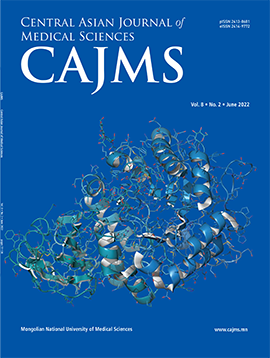Comparison of Adverse Events Between Selective Internal Radiation Therapy Versus Sorafenib in Locally Advanced Hepatocellular Carcinoma in Mongolia: A Subgroup Analysis of SIRveNIB Study
DOI:
https://doi.org/10.24079/cajms.2017.11.011Keywords:
Selective Internal Radiation Therapy, Sorafenib, Hepatocellular Carcinoma, Adverse Event, MongoliaAbstract
Objective: This study compared the adverse events associated with selective internal radiation therapy to sorafenib in the treatment of patients with locally advanced hepatocellular carcinoma (HCC). Methods: From March 2011 to June 2106, the National Cancer Center of Mongolia recruited 39 patients from Mongolia (19 received sorafenib and 20 received SIRT in Singapore) with advanced hepatocellular carcinoma who had not received surgical therapy into a multicenter study involving a total of 360 patients at 27 sites in 11 Asia-Pacific countries. The study was a phase III randomized-controlled clinical trial comparing sorafenib or SIRT. Results: Adverse events for patients receiving sorafenib were predominantly grade 1 or 2 in gastrointestinal, constitutional and dermatologic in nature. The most frequently reported drug-related adverse events in patients treated with sorafenib were hypertension, hand-foot skin reaction, diarrhea, alopecia, fatigue. Common procedure-related adverse events were usually mild (grade 1/2) and included nausea and vomiting (27.7% all grades) and abdominal pain (22.1% all grades), with very few grades 3 or greater adverse events. Conclusion: In our analysis of 39 patients, we were unable to detect a statistically significant difference in adverse effects between sorafenib and SIRT treatment groups, likely because there were insufficient number patients in our study.
Downloads
158
Downloads
Published
How to Cite
Issue
Section
License
Copyright (c) 2017 Mongolian National University of Medical Sciences

This work is licensed under a Creative Commons Attribution-NonCommercial 4.0 International License.




